Only one of the three men who died in the Arctic crash of a Canadian Coast Guard helicopter was wearing a full immersion suit, which was not completely zipped up, and only one victim had a life jacket on, CBC News chief correspondent Peter Mansbridge reported Wednesday.
Sources close to the crash investigation have helped CBC News piece together some of what happened on the helicopter's fateful mission.
The TSB has recovered the wreckage of the helicopter that crashed into the Arctic Ocean earlier this month. (Transportation Safety Board)
Crashed Arctic helicopter found
Marc Thibault, the commanding officer of the coast guard ship Amundsen, Daniel Dubé, the pilot of the helicopter, and Klaus Hochheim, an Arctic scientist affiliated with the University of Manitoba, died of hypothermia on Sept. 9 when their chopper crashed into the Arctic Ocean. The crash occurred in M'Clure Strait, about 600 kilometres west of Resolute, while the three men had been on an ice research flight.
Peter Mansbridge
CBC News chief correspondent

Peter Mansbridge has made frequent trips to Canada’s Arctic, reporting on the search for the Franklin Expedition, Arctic research and changes to the environment . The Canadian Coast Guard vessel Amundsen is one of several Coast Guard icebreakers he has been on, having toured its facilities, met its crew and flown in its helicopter.
All three men managed to get out of the chopper before it sank, but then the water, which was about 0 C, began taking its icy death grip.
Full immersion suits are designed to protect the wearer from cold water, but only if they are fully zipped up. Dubé’s body was found with the suit only partially zipped up. Pilots often fly with the suits partly open because they get warm.
Thibeault and Hochheim both had different suits on, but not the kind that would provide full protection against the icy waters.
David Barber, a veteran of Arctic research and a friend of Hochheim, recognizes the crew was alive for only a brief time in the water.
"The water’s far too cold and…you go through all the stages of hypothermia very rapidly with death following shortly thereafter because your internal organs all shut down," he said.Additionally, two of the men were found in the water without life jackets, and while the third man did have one on it was not properly inflated. Coast guard policy is that life jackets must always be worn on helicopter flights over water.

The Transportation Safety Board released this image of the Amundsen's helicopter, which was discovered on the ocean floor. The wreckage was raised to the surface on Wednesday. (Transportation Safety Board)Prior to the crash, the crew had been working about five kilometres from the Amundsen, and had radioed to the ship that they were returning. But the evidence, in addition to the survival suits and life-jackets, suggests whatever happened to the chopper occurred quickly:
Dubé had no time or was unable to send a final radio distress call.
(NO LOCAL EMERGENCY IMPACT TRIGGERED BEACON)
Pictures of the aircraft taken more than 400 metres down on the sea floor show the chopper’s front section heavily damaged and the tail broken off.
(PILOT MANAGED TO 'LAND' HELICOPTER WITH CREW ALIVE)
There is said to be a debris field about 300 metres around the aircraft.
(OPEN OCEAN CRASH SIGHT WITH WINDS AND CURRENT)
The helicopter had equipment that could have kept it afloat for hours, but pictures indicate that while the switch for the pop-up floats was activated, they were not deployed.
(ELECTRICAL FAILURES FROM CRASH?)
The aircraft carried a life raft for emergencies, but there’s no evidence it was used.
(THE OCCUPANTS EITHER DID NOT ATTEMPT TO DEPLOY THE LIFE RAFT OR HAD NO KNOWLEDGE OF ITS PRESENCE - PRE-FLIGHT BRIEFING ERROR?)
The wreckage of the helicopter was raised to the surface on Wednesday. Crash investigators will now begin trying to determine why the chopper went down, but that could take a year or more, and it won’t be easy. The helicopter did not carry flight data recorders. While it did carry a fixed camera to record the ice probe operation, it is not clear if it was recording at the time things went terribly wrong.
Marc Thibault, the commanding officer of the coast guard ship Amundsen, Daniel Dubé, the pilot of the helicopter, and Klaus Hochheim, an Arctic scientist affiliated with the University of Manitoba, died of hypothermia on Sept. 9 when their chopper crashed into the Arctic Ocean. The crash occurred in M'Clure Strait, about 600 kilometres west of Resolute, while the three men had been on an ice research flight.
Peter Mansbridge
CBC News chief correspondent

Peter Mansbridge has made frequent trips to Canada’s Arctic, reporting on the search for the Franklin Expedition, Arctic research and changes to the environment . The Canadian Coast Guard vessel Amundsen is one of several Coast Guard icebreakers he has been on, having toured its facilities, met its crew and flown in its helicopter.
All three men managed to get out of the chopper before it sank, but then the water, which was about 0 C, began taking its icy death grip.
Full immersion suits are designed to protect the wearer from cold water, but only if they are fully zipped up. Dubé’s body was found with the suit only partially zipped up. Pilots often fly with the suits partly open because they get warm.
Thibeault and Hochheim both had different suits on, but not the kind that would provide full protection against the icy waters.
David Barber, a veteran of Arctic research and a friend of Hochheim, recognizes the crew was alive for only a brief time in the water.
"The water’s far too cold and…you go through all the stages of hypothermia very rapidly with death following shortly thereafter because your internal organs all shut down," he said.Additionally, two of the men were found in the water without life jackets, and while the third man did have one on it was not properly inflated. Coast guard policy is that life jackets must always be worn on helicopter flights over water.

The Transportation Safety Board released this image of the Amundsen's helicopter, which was discovered on the ocean floor. The wreckage was raised to the surface on Wednesday. (Transportation Safety Board)Prior to the crash, the crew had been working about five kilometres from the Amundsen, and had radioed to the ship that they were returning. But the evidence, in addition to the survival suits and life-jackets, suggests whatever happened to the chopper occurred quickly:
Dubé had no time or was unable to send a final radio distress call.
(NO LOCAL EMERGENCY IMPACT TRIGGERED BEACON)
Pictures of the aircraft taken more than 400 metres down on the sea floor show the chopper’s front section heavily damaged and the tail broken off.
(PILOT MANAGED TO 'LAND' HELICOPTER WITH CREW ALIVE)
There is said to be a debris field about 300 metres around the aircraft.
(OPEN OCEAN CRASH SIGHT WITH WINDS AND CURRENT)
The helicopter had equipment that could have kept it afloat for hours, but pictures indicate that while the switch for the pop-up floats was activated, they were not deployed.
(ELECTRICAL FAILURES FROM CRASH?)
The aircraft carried a life raft for emergencies, but there’s no evidence it was used.
(THE OCCUPANTS EITHER DID NOT ATTEMPT TO DEPLOY THE LIFE RAFT OR HAD NO KNOWLEDGE OF ITS PRESENCE - PRE-FLIGHT BRIEFING ERROR?)
The wreckage of the helicopter was raised to the surface on Wednesday. Crash investigators will now begin trying to determine why the chopper went down, but that could take a year or more, and it won’t be easy. The helicopter did not carry flight data recorders. While it did carry a fixed camera to record the ice probe operation, it is not clear if it was recording at the time things went terribly wrong.
COMMENT:
It is extraordinary that the Amundsen apparently came upon 3 bodies in the water after sailing for 40 mins to 1 hour(?) to the last known location of the helicopter. Talk about finding needles in a haystack! Complete mechanical failure? It hardly seems likely. The MBB 105 is twin-engined. Was he flying so low that he had no time to autorotate nor broadcast a mayday? Yet apparently he had radioed that he was returning to the ship so one would presume he was at a reasonably high altitude. Was there much ice around? If he had been able to autorotate, surely he would have aimed for a landing on a floe. The 3 occupants all managed to unbuckle their seatbelts and evacuate, suggesting that the machine remained upright on the surface some time before sinking. That surface must have been something more or less solid, i.e. ice, because the pop-up floats were not inflated and if he'd landed in the water he'd have sunk immediately. Did the floe then give way and there was no nearby ice reachable by swimming?
So many questions, so few answers
- - - end of update - - -
http://www.cbc.ca/news/canada/north/crashed-arctic-helicopter-found-1.1866381
The chopper that went down earlier this month in the M'Clure Strait in Arctic waters has been found. But now it has to be recovered from the depths.
Three men died in the crash, after the helicopter took off from the coast guard icebreaker the Amundsen two weeks ago. The helicopter never returned. When the Amundsen hurried to investigate, crew members found the bodies of the three men floating in the water, wearing their survival suits.
After the accident, the Amundsen returned to Resolute Bay, Nunavut, with the bodies. It later returned to the scene to recover the chopper from the frigid water.
Investigation continues
The Transportation Safety Board said a remote-operated vehicle found the helicopter on the ocean floor, in water about 450 metres deep.
The coast guard, ArcticNet and the TSB are working together to recover it. But they say ice and weather conditions are making that difficult.
"While the aim is to recover the helicopter as quickly as possible, ensuring the safety of the personnel and vessels involved in this operation is a first priority," the TSB said in a release.

The TSB found the Amundsen's helicopter in roughly 450 metres of water. (Transportation Safety Board)
In addition to the Amundsen, the coast guard icebreaker Henry Larsen is also assisting with the operation. The former is operating the unmanned vehicle. The latter is in charge of clearing ice.
TSB lead investigator Jean-Marc Ledoux said the plan is to raise the chopper as soon as conditions allow.
"The ship has to be quite stabilized in order to make a good recovery," he said. "If there's too much ice around the ship they won't be able to lift up the wreckage through the ice, so they have to move the ice away in order to be able to lift up the wreckage."
He said he hopes the chopper will be recovered by the end of Wednesday.
Once that's done, the helicopter will be transported to a TSB lab to inspect "all types of components, engines, transmission, blades and the wreckage itself" to determine what happened, Ledoux said.
- - - snip - - -
Update 2: Police say there was a fourth person killed, BBC reports. The update said that three of the four bodies have been recovered. Police in Scotland have now confirmed 14 others have been rescued.
Update: BBC reports that the bodies of the 3 people missing following the crash have been found.
Three people are still missing after a Super Puma helicopter carrying passengers from a North Sea drilling rig ditched into the sea west of the Shetland Islands.
The helicopter was carrying 16 passengers and 2 crew when it went down at about 6:20 p.m. local time approximately two miles west of Sumburgh Airport, located on the southern tip of Shetland.
An update from the U.K.’s Maritime and Coastguard Agency said that the Shetland Maritime Rescue Coordination Centre was notified at 6.30 p.m. by the Air Rescue Coordination Centre that they had lost contact with the Super Puma helicopter traveling from the Borgsten Dolphin semi-submersible drilling rig to Sumburgh. The Borgsten Dolphin is operated by Total SA.
The update said that so far 15 people have been accounted for and 3 people are still missing.
At least three helicopters and two RNLI lifeboats are involved in the search, along with a ferry that was initially rerouted to the scene.
The U.K.’s Air Accidents Investigation Branch said it has been notified of the incident and has deployed a team to investigate.
The helicopter is operated by CHC. In a statement, the company confirmed that there “has been an incident involving one of our aircraft in the North Sea” and that “the appropriate authorities have been informed and the company’s Incident Management Team is being mobilised,” according to Sky News.
Sky News reports that the helicopter was a Eurocopter Super Puma AS332 L2.

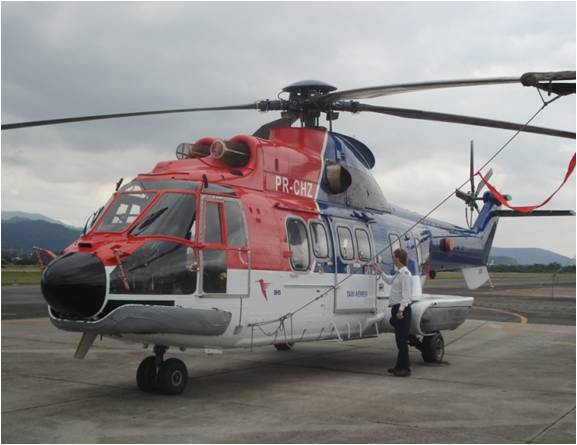
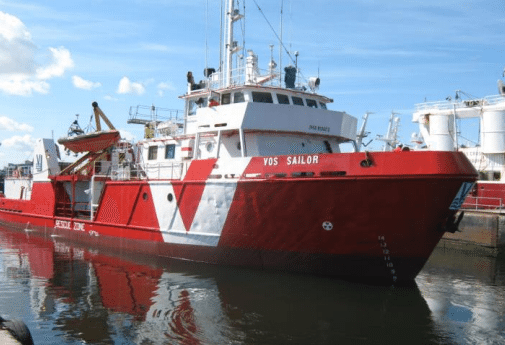
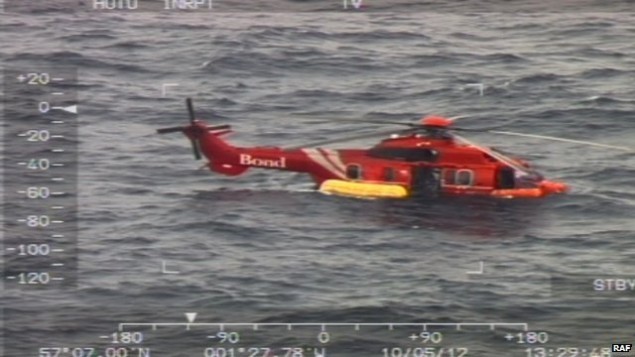
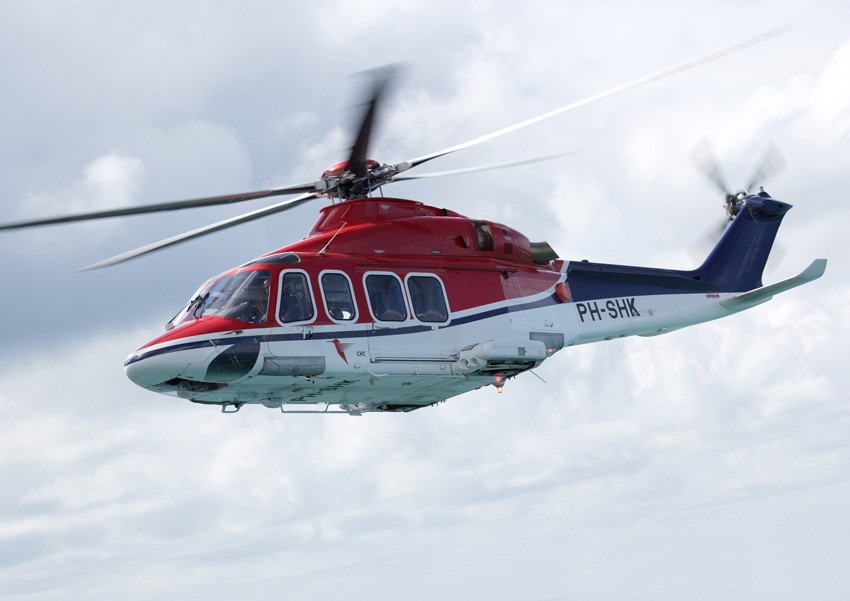
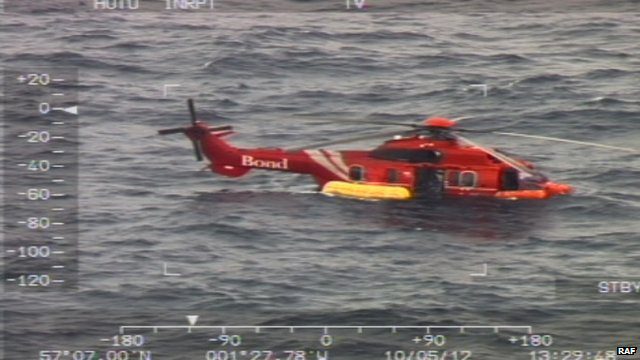
No comments:
Post a Comment
Enter your comment(s) here...